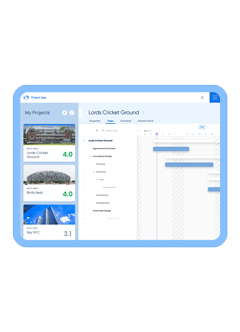
AEC firms are nothing without projects, the bread and butter of the business. Firms must consistently seek new sources of income; otherwise, once a project has been delivered, there’s no more revenue for the business. But where do projects come from, and how do firms get them?
Projects come from leads — potential or existing clients who need something done — and AEC firms compete to win contracts based on those leads. An established firm will have a defined sales process for identifying and bidding on projects. We call that process project pursuit.
A well-developed project pursuit protocol allows an AEC firm to document, track, analyze, and control opportunities, typically using enterprise resource planning (ERP) software to track all stages of the sales pipeline. A basic project pursuit process may include researching a potential opportunity, contacting the prospect, conducting resource planning and procurement, creating and presenting a proposal, and monitoring and controlling project execution and delivery.
Each firm’s process will be somewhat unique, but the main goal is always to win new project contracts to create continuous revenue and increase profits. There are several terms common to all project pursuit processes, and we’ve defined them below.
Contact
- A referenced associate of a business partner or prospect
Go/No-Go
- A process that occurs during opportunity management to evaluate whether to move forward with an opportunity
Lead
- A prospective customer of a product or service
Lead Identification
- The process a company uses to identify new prospects
Opportunity
- A potential project with a prospect or client
Opportunity Management
- A method for tracking opportunities and related criteria
Opportunity Stage
- A high-level phase within the sales process, predefined in opportunity management
Project Estimate
- A calculation of the cost, scope and time it takes to deliver task assignments for a potential project
Project Proposal
- A summary or preliminary version of a proposed contract detailing the terms and conditions, scope of services, fee schedule and other legal and project-specific terms required by the owner
Request for Information (RFI)
- A document created to gather general information about a supplier’s product or service
Request for Proposal (RFP)
- A formal document, typically posted publicly, announcing a project that includes a detailed description of all the work required and a request for bids from qualified contractors
The AEC industry relies on project pursuit to document and track every part of the sales process, from the initial conversation with the client or prospect to delivery of the completed project. By tracking project pursuit, a firm can gain a fairly accurate picture of its current potential revenue and future prospects. Keeping project pursuit a priority helps drive profitability and ensure ongoing income streams. For more information about project pursuit and project management in general, check out “The Ultimate ERP Glossary for AEC Firms.”
BST Global helps AEC firms worldwide manage their projects efficiently with innovative, AI-powered and collaborative project intelligence™ solutions. To learn more, visit BSTGlobal.com.









